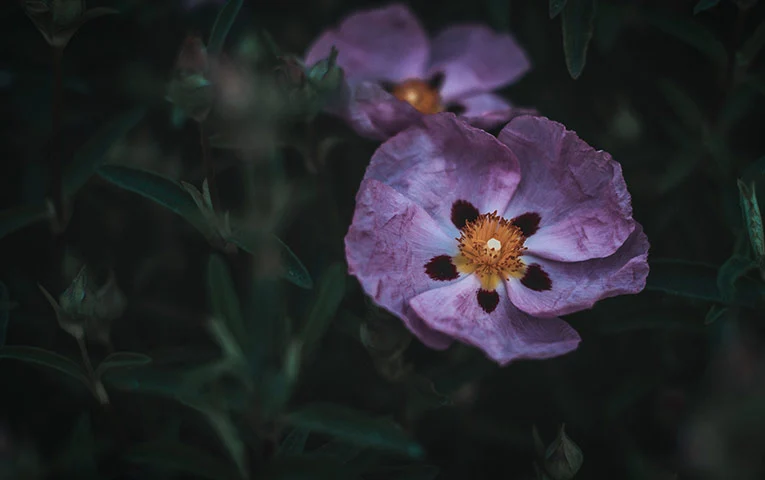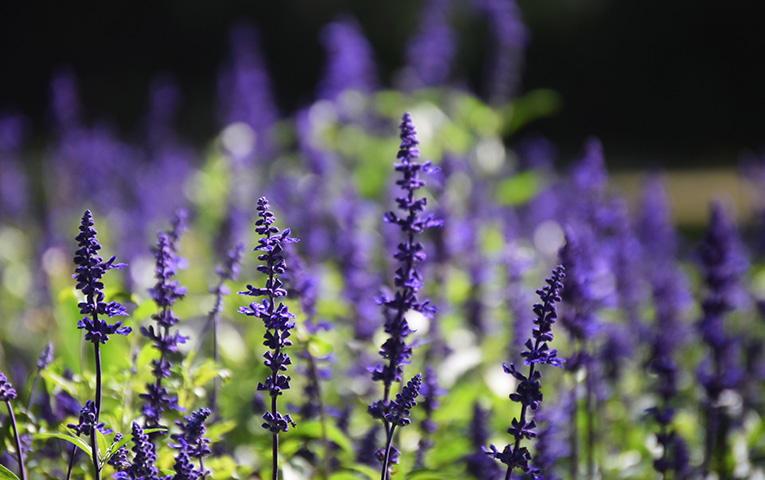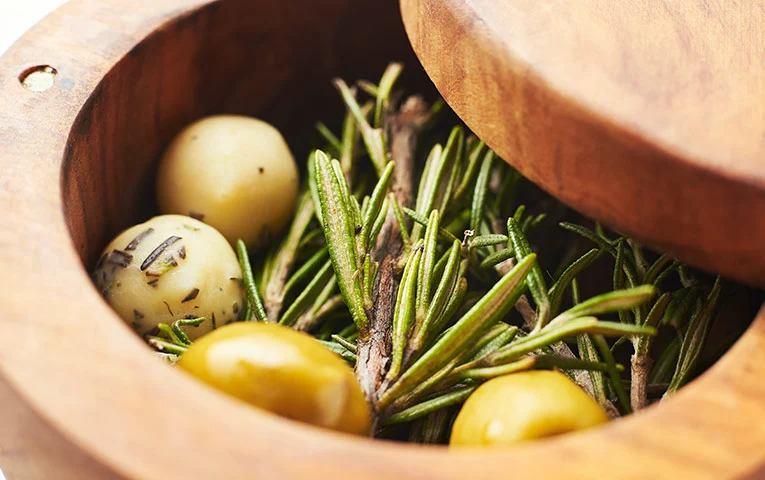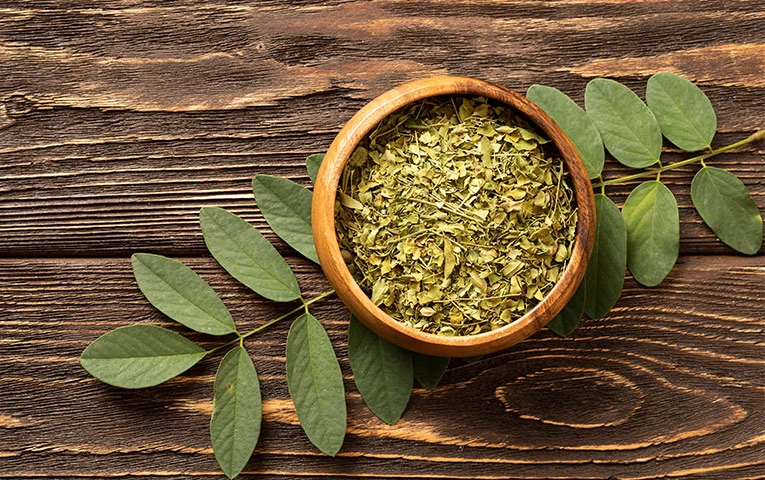By Orestes Davias
On any given day, a simple stroll outdoors in Messinia provides us the views and fresh air we need to feel invigorated throughout the day. The heady smells, proof of the abundance of flora that thrives in this fertile soil, are important, too.
On our usual walk, we pass juniper bushes, which appear in profusion along most beaches in this region, and cyclamens, poking their heads out among the trunks of sturdy pines. Because we know where they are, we sometimes even spot a couple of the area’s rare orchids. But there are also plenty of plants that don’t need to be seen to be noticed; anyone with a nose will quickly discover a plethora of fragrant, health-boosting herbs, ready to be picked by those who know how to use them, either to treat a variety of ailments or simply to sharpen the flavors of local dishes.
If you enjoy nature walks, you’ll soon realize they aren’t hard to spot. You’ll also find them in stores, available for purchase in dried form so you can take something home to remind you of the treasures and joys hidden away in the region’s mountains and brushlands. The list below includes some of the most common plants you’ll come across.
Some of these herbs include:
- Greek Sage (Salvia fruticose)
- Pink Rockrose (Cistus creticus subsp. creticus)
- Hyssop (Hyssopus officinalis)
- Winter Savory (Satureja thymbra)
- Rosemary (Rosmarinus officinalis)
- Oregano (Origanum vulgare subsp. hirtum)
- Thyme (Coridothymus capitatus)
Unlike other types of sage, Greek sage, found mainly in the country’s southern regions, does not cause overstimulation, even after long-term use. This makes it particularly favored as a tea, good as a cure for indigestion and anxiety, especially for older people. It’s also popular among herbal therapists, who laud its positive effects in battling fevers and inflammations (including sore throats) as well as its efficacy as an antiperspirant. Oddly enough, despite its rich aroma and digestive properties, it has rarely featured in Greek cooking. Nevertheless, it deserves consideration as a cooking herb, because it helps temper the fattiness of oils and goes very well with beans and peas.

The pink rockrose, which breaks out in a profusion of beautiful pink flowers in spring, can be identified by their “wrinkled” petals. There’ll be a lot of it. When it finds a nice dry rocky spot, this shrubby plant can spread out over quite a large area. Ever since ancient times, people have been collecting resin, known as labdanum, from its leaves; it’s valuable both as an aromatic and a medicinal ingredient. This extract has been traditionally used as an astringent and decongestant; however, after recent significant discoveries, the pharmaceutical industry has taken a greater interest in its antimicrobial properties.

Hyssop, similarly, has a long history of medicinal use but, despite its exceptional qualities and beautiful appearance and fragrance, it’s rarely used or seen in gardens today. It isn’t hard to find in the wild, however, especially when it’s in bloom, as it likes lower elevations, rocky soil and open terrain with plenty of sunshine. Modern and traditional plant therapists agree that this herb is a good tonic with sweat-inducing properties, useful in battling respiratory complaints, including coughs, and in treating fevers and spasms.

Perhaps the easiest to spot of all the herbs you’ll come across on your walk is rosemary. Not only is this an impressive plant visually, often growing to the size of a large bush, it also has a powerful aroma that helps us locate it among the dense brush in which it tends to thrive. It has undisputed healing properties and is used locally as a tea to boost the function of the heart, help digestion and improve the memory. In the kitchen, just a few of its needle-like leaves can add that welcome aroma that is so aptly and poetically expressed by the plant’s Latin name, rosmarinus, meaning “sea dew.”

Even more famous as an ingredient in is oregano; a love of this plant is among the many things that Greeks have inherited from their ancient ancestors. There are plenty of references in ancient literature to its culinary qualities, and Greek food today wouldn’t be what it is without it. Oregano bestows its lively aroma and subtle flavor on salads, white cheeses, casseroles and vegetable stews, especially those made with tomato. Mixed with good olive oil, this humble herb shows off its forceful mountain character, enlivening grilled meat and fish, among other dishes. What’s more, doctors of yore had great faith in its healing properties and, to this day, it’s used as a folk remedy to heal and disinfect wounds, provide energy and soothe the stomach.
If you plan on engaging in a game of backgammon or a tennis match when you get back from your walk, look for thyme. Elderly denizens of ancient Greece drank thyme tea to keep their minds sharp. Simmered together with figs in wine, thyme was also known to make an excellent strength-boosting beverage, although it was most popular as a powerful stimulant for the libido – being dedicated, in fact, to the goddess Aphrodite. Today, we use thyme medicinally for its antiseptic and healing properties, as a decongestant, or in a liquid form as a gargling solution to treat a sore throat or a cough. You’ll also find it in , but do remember that it’s quite strong and must be applied sparingly when used in salads, cheese dishes, vegetable pies or sauces.
Winter savory might be the trickiest to identify of all the herbs listed here, but being able to do so is a great boon if you happen to get a bug bite. Rub it on the bite, and it will help with any itchiness or soreness. To recognize it, remember that it looks a lot like thyme but smells a bit like oregano – although winter savory is completely different from both of these plants, with significant medicinal powers. Among body healing herbs used in ancient Greece, for millennia, it’s been used to treat all sorts of digestive complaints. It’s also regarded as an effective decongestant and a powerful disinfectant. In addition, the leaves and flowers of this health-boosting plant can be dried and ground into powder for use as a natural flavoring agent for olives and vinegar, as well as for beans, peas, sauces and stews.
[Edited version of an article published in Costa Navarino Stories, Issue 08].

